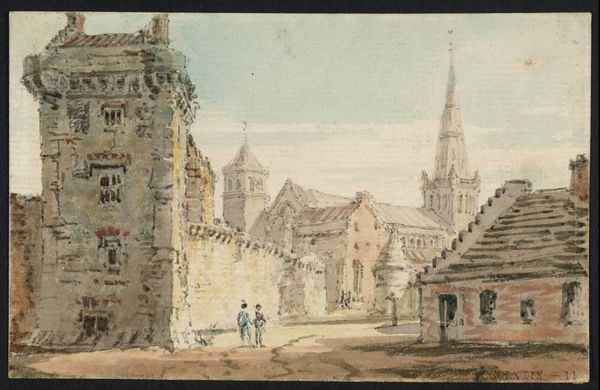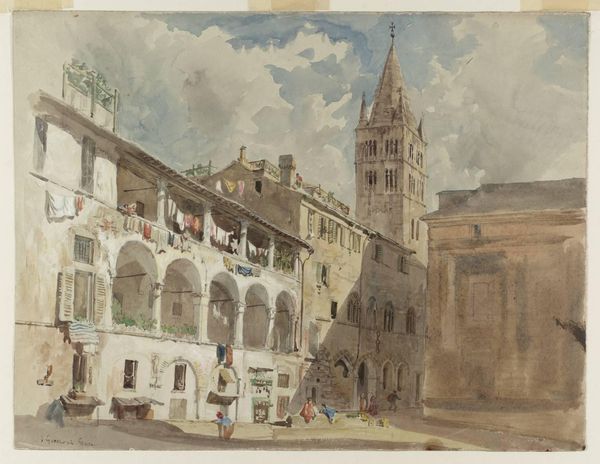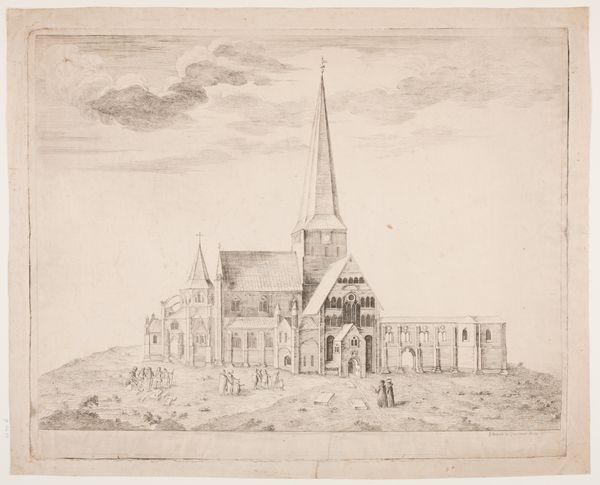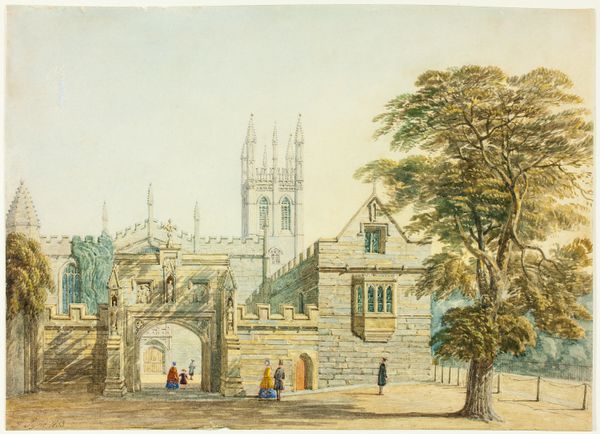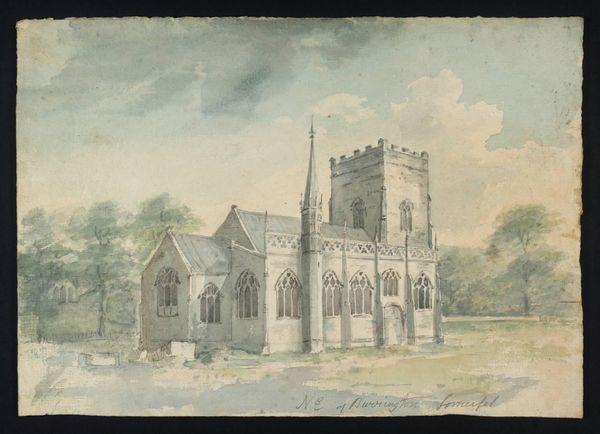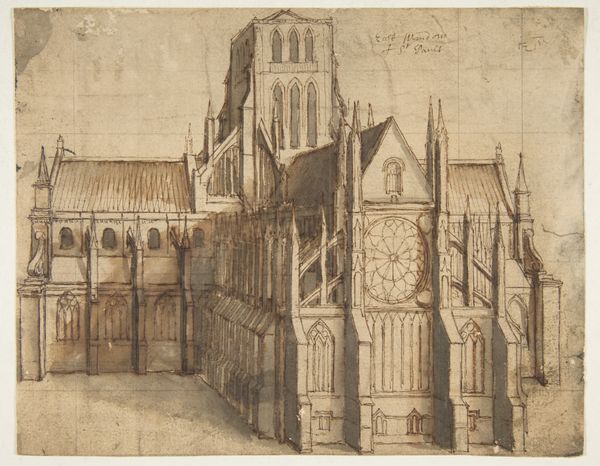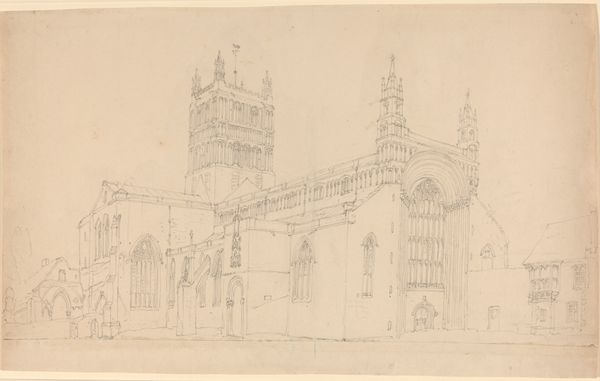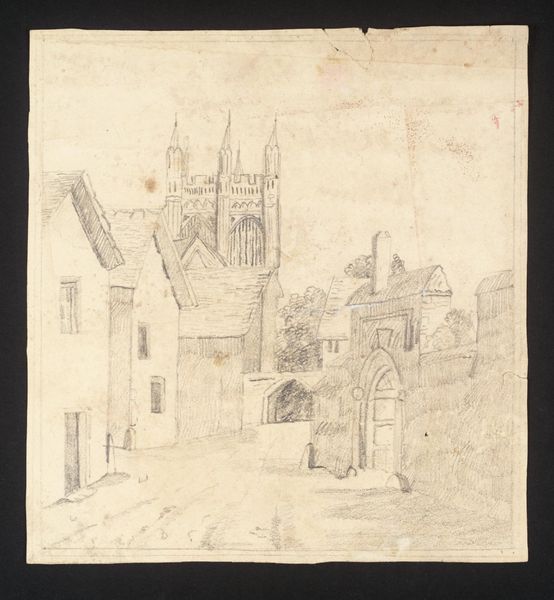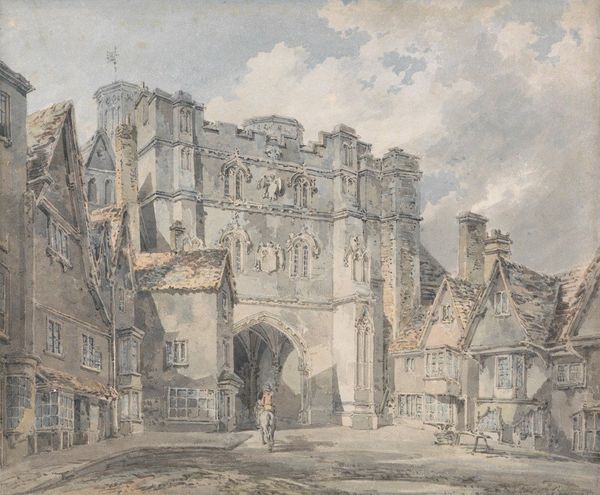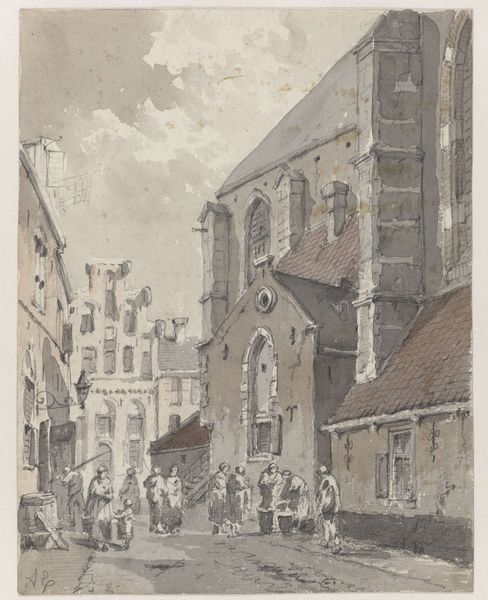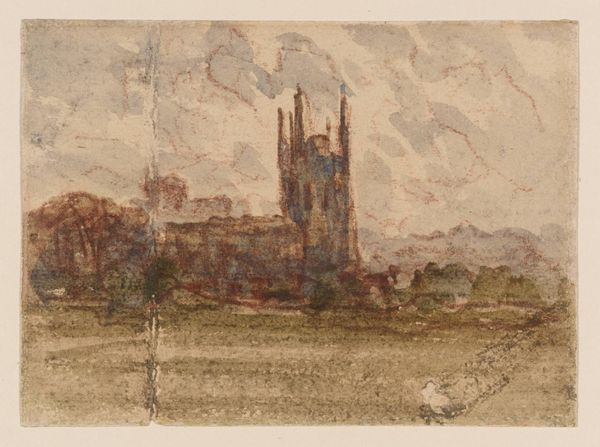
Dimensions: support: 279 x 381 mm
Copyright: CC-BY-NC-ND 4.0 DEED, Photo: Tate
Editor: So, this is Joseph Farington's "North-East View of Worcester Cathedral," held at the Tate. It's a watercolor, and what strikes me is the contrast between the grand cathedral and the modest buildings in front. What's your take? Curator: Consider the labor involved in quarrying, transporting, and shaping the stone for the cathedral versus the ready availability of materials for the domestic structures. Note how the artist renders the cathedral's facade with detailed, repetitive lines, emphasizing the skilled craftsmanship, while the houses appear more freely rendered. It almost seems to comment on the social hierarchy embedded within the landscape itself, doesn't it? Editor: That's fascinating; I hadn't considered the labor aspect so explicitly. Curator: By examining the materiality and means of production, we unveil the power dynamics at play during its creation and reception. Editor: It really highlights how art is intertwined with economic realities. Curator: Exactly.
Comments
tate 8 months ago
⋮
http://www.tate.org.uk/art/artworks/farington-north-east-view-of-worcester-cathedral-t08449
Join the conversation
Join millions of artists and users on Artera today and experience the ultimate creative platform.
tate 8 months ago
⋮
Joseph Farington is especially remembered today for his Diaries, which provide a remarkable insight into artistic life in London between 1793 and 1821. A pupil of the landscape painter Richard Wilson, Farington chose to specialise in topography. He was a prolific draughtsman and favoured an intricate drawing style derived from the Venetian artist Canaletto, characterised by short, broken pencil strokes resembling dots and dashes, visible here under the washes of colour. This sketchbook was almost certainly used by Farington on a tour to the West Midlands in 1789. In this study he has used ruled pencil lines to help him draw in correct prespective. The lines meet at a point on the right-hand pinnacle of the cathedral's east end. Gallery label, September 2004

